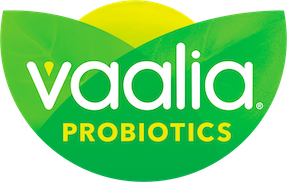How to meet calcium needs as we age
22 May, 2024

By Jaime Rose Chambers
Calcium is an essential mineral that is used in our cardiovascular and nervous system, but its most famous role is as the primary building block of our bones and teeth [1]. Our calcium needs are met through diet, and intake becomes more of a focus at various stages of development due to changes happening in our body [2]. However calcium deficiencies are increasingly more common, the most recent data shows that over half of all Australians over the age of 2 years don’t consume adequate amounts of calcium [3]. This increases the risk of brittle bones known as osteoporosis and bone fractures [1].
Almost all our calcium (99 percent of it) is found in our bones and teeth and the remaining one percent is found in our blood, where levels are kept very tightly regulated [1]. When blood levels begin to decline, the body will draw from our stores and when there’s an excess, it will store it away [1]. This process is happening constantly, which is why meeting daily calcium requirements is so important.
Naturally, childhood is an important time for calcium intake as little bones and teeth are growing. In adolescence, calcium requirements spike due to intensive bone development plus the laying down of lifelong bone stores to reach optimum peak bone mass, which can protect against osteoporosis in adulthood [2].
Female adolescents and young adults are a group at risk of calcium deficiency due to change in dietary habits such as avoiding dairy foods and disordered eating patterns, as well as those who exercise intensely and have excessive losses of calcium through sweat [1].
Perimenopause is the stage in the leadup to menopause for women that begins around the age of forty. The female hormone, estrogen begins to decline causing a sharp drop in bone mass from menopause [5]. To mitigate this, calcium needs are higher – going from 3 to 4 serves of dairy foods per day from the age of fifty [5].
Another group at high risk of calcium deficiency are those with a dairy allergy or lactose-intolerance [1]. Cow’s milk allergy means no dairy foods can be consumed, it is most common before the age of 5 and calcium fortification and supplements are essential to meet requirements [6]. Lactose-intolerance can occur at any age and is becoming more commonly diagnosed in adulthood [6]. Despite the fact that all dairy foods are available in lactose-free varieties, many people are choosing plant-based alternatives or omitting dairy foods completely without correcting for the lack of calcium, putting them at greater risk of deficiency.
How much calcium do we need every day?
Children:
1 – 3 years = 500 mg
4 – 8 years = 700 mg
9 – 11 years = 1,000 mg
12 – 18 years = 1,300 mg
Adults:
Men
19 – 70 years = 1,000 mg
>70 years = 1,300 mg
Women
19 – 50 years = 1,000 mg
>50 years. = 1,300 mg
Pregnancy & breastfeeding = 1,000 mg
[5]
How can we get enough calcium into our diet?
Dairy foods are the most reliable sources of calcium because they have a high density of calcium per serve, as well as high bioavailability, meaning it’s easily accessible and well absorbed by our body [3] [2].
A serving of dairy foods provides roughly 200-300 mg of calcium and includes 1 cup of dairy or calcium-fortified plant milk, 2 slices of cheese, half a cup of fresh cheese like cottage cheese and 150 g of yoghurt [8].
Some yoghurt, like Vaalia probiotic yoghurt Natural, contain a high source of calcium. A 150 g serving of Vaalia Natural contains 300 mg of Calcium. Vaalia is also packed with special probiotics, is low fat, and is a source of prebiotic dietary fibre.
#AD
Bibliography
[1] |
J. A. Beto, “The Role of Calcium in Human Aging,” Clin Nutr Res, vol. 4, no. 1, pp. 1-8, 2015. |
[2] |
Dairy Australia, “Bone Health,” [Online]. Available: https://www.dairy.edu.au/information/bone-health. [Accessed 2024]. |
[3] |
Better Health Channel, “Calcium,” [Online]. Available: https://www.betterhealth.vic.gov.au/health/healthyliving/calcium. [Accessed 2024]. |
[4] |
M. Mesias, I. Seiquer and M. P. Navarro, “Calcium nutrition in adolescence,” Crit Rev Food Sci Nutr, vol. 51, no. 3, pp. 195-209, 2011. |
[5] |
Eat For Health, “Calcium,” [Online]. Available: https://www.eatforhealth.gov.au/nutrient-reference-values/nutrients/calcium. [Accessed 2024]. |
[6] |
Better Health Channel, “Cow’s milk allergy,” [Online]. Available: https://www.betterhealth.vic.gov.au/health/conditionsandtreatments/cows-milk-allergy. [Accessed 2024]. |
[7] |
Health Direct, “Lactose Intolerance,” [Online]. Available: https://www.healthdirect.gov.au/lactose-intolerance. [Accessed 2024]. |
[8] |
Healthy Bones Australia, “Calcium content of common foods,” [Online]. Available: https://healthybonesaustralia.org.au/wp-content/uploads/2022/10/calcium-rich-food-list_en_1_healthybonesaustralia-iof-version-draft-1.pdf. [Accessed 2024]. |



